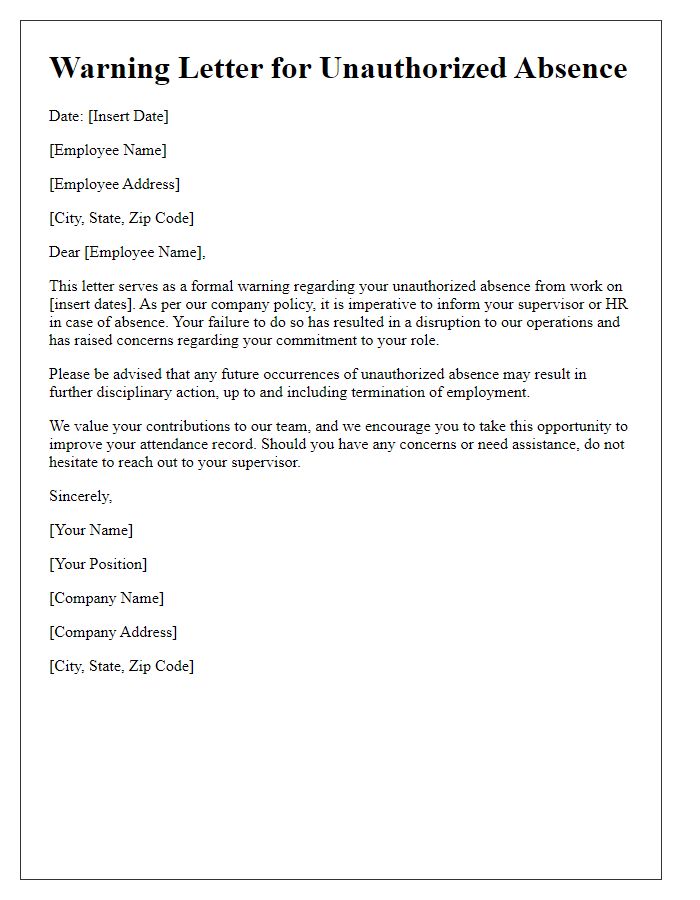Are you wondering how to effectively communicate a job abandonment warning to an employee? Crafting a well-structured letter can make all the difference in addressing the situation constructively. It's important to balance professionalism with clarity, ensuring the employee understands the implications of their actions. If you're ready to dive deeper into how to compose such a letter, keep reading for a comprehensive guide!

Clear subject line
Job abandonment warning issued to employees may result when absence exceeds company policy guidelines, typically three consecutive workdays without notification. This policy ensures operational continuity and accountability among staff members. Failure to adhere could lead to disciplinary action, including termination of employment, as outlined in the employee handbook. It is important to establish clear communication protocols to avoid misunderstandings regarding attendance expectations at the workplace.
Employee's full name and position
Job abandonment occurs when an employee fails to report to work without prior notice for an extended period, typically three consecutive days. For instance, an employee named John Smith, a Sales Associate, did not attend his scheduled shifts from October 10 to October 13, 2023, without communication to his supervisor or HR department. In accordance with company policy, this absence can lead to disciplinary action, including termination of employment. The warning indicates that continued non-communication or absence may result in further consequences, including removal from the employee roster. It's essential for employees to understand the importance of maintaining open communication regarding their attendance and the potential ramifications of failing to do so.
Date(s) of absence without notice
Job abandonment occurs when an employee fails to report to work for a certain period without any notification to the employer. According to company policy, absence without notification for three consecutive days may be considered job abandonment. For instance, if an employee has been absent from October 1 to October 3, 2023, without informing the employer, this can trigger a warning. Employers typically document such occurrences and may send a formal warning outlining dates of absence, company policies regarding attendance, and potential consequences for continued absence, which can range from loss of employment to disciplinary action. Communication should include the impact of absences on team dynamics and operational efficiency, emphasizing the importance of notifying supervisors in advance of any absence.
Reference to company policy
Job abandonment occurs when an employee fails to report to work for a specified period without notifying their supervisor. Company policies typically define job abandonment as two consecutive days of unreported absence. Failure to adhere to these guidelines may result in disciplinary action, including termination. It is crucial for employees to communicate any potential absences to management to avoid misunderstandings and consequences aligned with workplace policies. Proper notification not only upholds professionalism but maintains operational efficiency within the organization.
Consequences of further violations
Job abandonment can lead to serious consequences for employees. Organizations typically define job abandonment as an employee's failure to report to work for a specified period, often three consecutive days without notice, often violating attendance policies. Immediate consequences may include a formal warning notice, potentially leading to termination of employment if behavior continues. Human resources departments emphasize the importance of maintaining open communication regarding absences, as lack of notification can disrupt team dynamics and productivity levels. Employers may also refer to state labor laws defining employee rights and responsibilities, adding another layer of complexity to job abandonment cases. Procedural guidelines often require documentation of occurrences to ensure fair treatment in accordance with company policies.













Comments